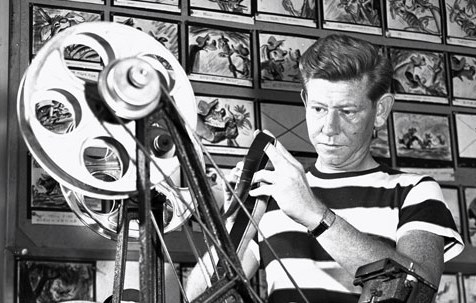Wilfred Jackson (Wilfred Jackson)

Motion Picture Animator, Director. He was a key associate of Walt Disney for over 30 years. Wilfred Emmons Jackson was born in Chicago and raised in Los Angeles. Cartoons fascinated him from childhood. While studying at the Otis College of Art and Design in 1928, he approached Disney and offered to pay him “tuition” for the experience of learning animation, which in those days could only be acquired on the job. His skills did not impress the young producer but his timing was fortuitous. Disney was in the process of having his star character, Oswald the Lucky Rabbit, and staff raided by distributor Charles Mintz, and had to rebuild the studio with a new character, Mickey Mouse. Jackson was hired as an all-around assistant, working closely with animator Ub Iwerks. When Disney proposed the gamble of making “Steamboat Willie” (1928) in sound, harmonica-player Jackson proved it was feasible by devising a crude synchronization method that related film speed with the musical beats of a metronome. He continued to assist Iwerks on such films as “The Skeleton Dance” (1929) before being promoted (“kicked upstairs” he called it) to director in 1930. Over the next decade he helmed some 50 cartoon shorts, introducing Donald Duck in “The Wise Little Hen” (1934) and crafting what many consider Mickey’s greatest one-reeler, “The Band Concert” (1935). Three won Academy Awards: “The Tortoise and the Hare” (1935), cited as the first cartoon to effectively animate speed; “The Country Cousin” (1936); and “The Old Mill” (1937), a showcase for Disney’s new Multiplane Camera, which created a startling illusion of depth. Jackson directed sequences of Hollywood’s first full-length animated film, “Snow White and the Seven Dwarfs” (1937), “Pinocchio” (1940), “Fantasia” (the “Night on Bald Mountain” and “Ave Maria” segments, 1940), “Dumbo” (1941), and “Song of the South” (1946), the latter combining live-action with animation. After World War II he teamed with Clyde Geronimi and Hamilton Luske to direct the features “Melody Time” (1948), “Cinderella” (1950), “Alice in Wonderland” (1951), “Peter Pan” (1953), and “Lady and the Tramp” (1955), and from 1954 to 1958 he shot several episodes of the “Disneyland” TV series. He retired in 1961. Compared to other top Disney artists of his era (such as Bill Tytla and the “Nine Old Men” animators) Jackson is little known. Modest to a fault, he drove himself hard to make up for what he felt were his shortcomings as a cartoonist. He gave few interviews and attributed his success entirely to Walt, whom he saw as a father figure. But he was probably Disney’s best short subject director of the 1930s and had a hand in the creation of several milestones in animation history. Jackson was posthumously named a “Disney Legend” in 1998. (bio by: Bobb Edwards)
Born
- January, 24, 1906
- USA
Died
- August, 08, 1988
- USA
Other
- Cremated

